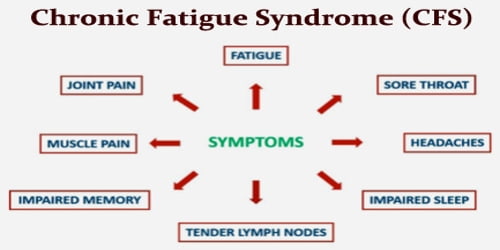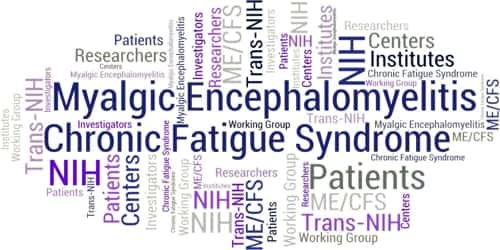Chronic Fatigue Syndrome (CFS)
Definition: Chronic fatigue syndrome (CFS), also referred to as myalgic encephalomyelitis (ME), is a debilitating disorder characterized by extreme fatigue or tiredness that doesn’t go away with rest and can’t be explained by an underlying medical condition. It can occur at any age and can affect children as well as adults.
The term ‘myalgic encephalomyelitis’ means pain in the muscles, and inflammation in the brain and spinal cord. ME/CFS is a complex illness and we do not know the cause. For some people, the condition may be triggered suddenly by a viral infection, toxic exposure, anesthetic, immunization, gastroenteritis or trauma. In other people, ME/CFS may develop slowly over months or years.
The causes of CFS aren’t well understood. Some theories include viral infection, psychological stress, or a combination of factors. Because no single cause has been identified, and because many other illnesses produce similar symptoms, CFS can be difficult to diagnose.
There is no cure, with treatment being symptomatic. Evidence suggests that cognitive behavioral therapy (CBT) and a gradual increase in activity suited to individual capacity can be beneficial in some cases.
Around 25 percent of people with ME/CFS will have a mild form and be able to get to school or work either part-time or full-time while reducing other activities. About 50 percent will have a moderate to severe form of ME/CFS and not be able to get to school or work. Another 25 percent will experience severe ME/CFS and have to stay at home or in bed.

Causes and Risk factors of CFS: The cause of CFS is unknown. Genetic, physiological and psychological factors are thought to work together to precipitate and perpetuate the condition. Researchers speculate that contributing factors may include:
- viruses
- a weakened immune system
- stress
- hormonal imbalances
It’s also possible that some people are genetically predisposed to develop CFS.
Though CFS can sometimes develop after a viral infection, no single type of infection has been found to cause CFS. Infections caused by bacteria, including Coxiella burnetii and mycoplasma pneumonia, have also been studied in relation to CFS. About 60 percent of cases occur after a viral illness, such as mononucleosis or gastroenteritis.
Factors that may increase people’s risk of chronic fatigue syndrome include:
- Age. Chronic fatigue syndrome can occur at any age, but it most commonly affects people in their 40s and 50s.
- Sex. Women are diagnosed with chronic fatigue syndrome much more often than men, but it may be that women are simply more likely to report their symptoms to a doctor.
- Stress. Difficulty managing stress may contribute to the development of chronic fatigue syndrome.
The term post-viral fatigue syndrome (PVFS) is used as an alternative name for CFS which occurs after a viral infection. Viral infection is a significant risk factor for CFS, with 22% of people with mononucleosis have chronic fatigue six months later, and 9% having strictly defined CFS.

Signs and Symptoms of CFS: The most widely referenced diagnostic criteria and definition of CFS for research and clinical purposes were published in 1994 by the United States Centers for Disease Control and Prevention (CDC). The symptoms of CFS vary based on the individual affected and the severity of the condition.
Signs and symptoms may include:
- Fatigue
- Loss of memory or concentration
- Sore throat
- Enlarged lymph nodes in people’s neck or armpits
- Unexplained muscle or joint pain
- Headaches
- Unrefreshing sleep
- Gastrointestinal changes such as nausea, bloating, constipation, and diarrhea
- Allergies or sensitivities to light, smells, touch, sound, foods, chemicals and medications
- Extreme exhaustion lasting more than 24 hours after physical or mental exercise
People are sometimes affected by CFS in cycles, with periods of feeling worse and then better again. Symptoms may sometimes even disappear completely, which is referred to as remission. However, it’s still possible for them to come back again later, in a relapse.

Diagnosis and Treatment of CFS: Currently, there is no single test to diagnose ME/CFS. Doctors make a diagnosis by excluding all other illnesses after a person has had symptoms continually for six months. The person’s results from routine medical tests will often be normal, but additional tests will show abnormalities.
The doctor must rule out a number of other illnesses before diagnosing chronic fatigue syndrome. These may include:
- Medical problems
- Sleep disorders
- Heart and lung impairments
- Mental health issues
There is no cure or approved treatment for CFS, but people may be able to treat or manage some of their symptoms. Treating the symptoms includes working with families and healthcare providers to make a plan and discuss the possible benefits and harms of the therapies.
Many people who have chronic fatigue syndrome are also depressed. Treating their depression can make it easier for them to cope with the problems associated with chronic fatigue syndrome. Antidepressants are mostly ineffective in treating CFS. Antiviral and immunological therapies have provided some benefit, but are limited by their side effects. Steroid replacement therapy is not effective.
The most effective treatment for chronic fatigue syndrome appears to be a two-pronged approach that combines cognitive training with a gentle exercise program.
Information Source:
















